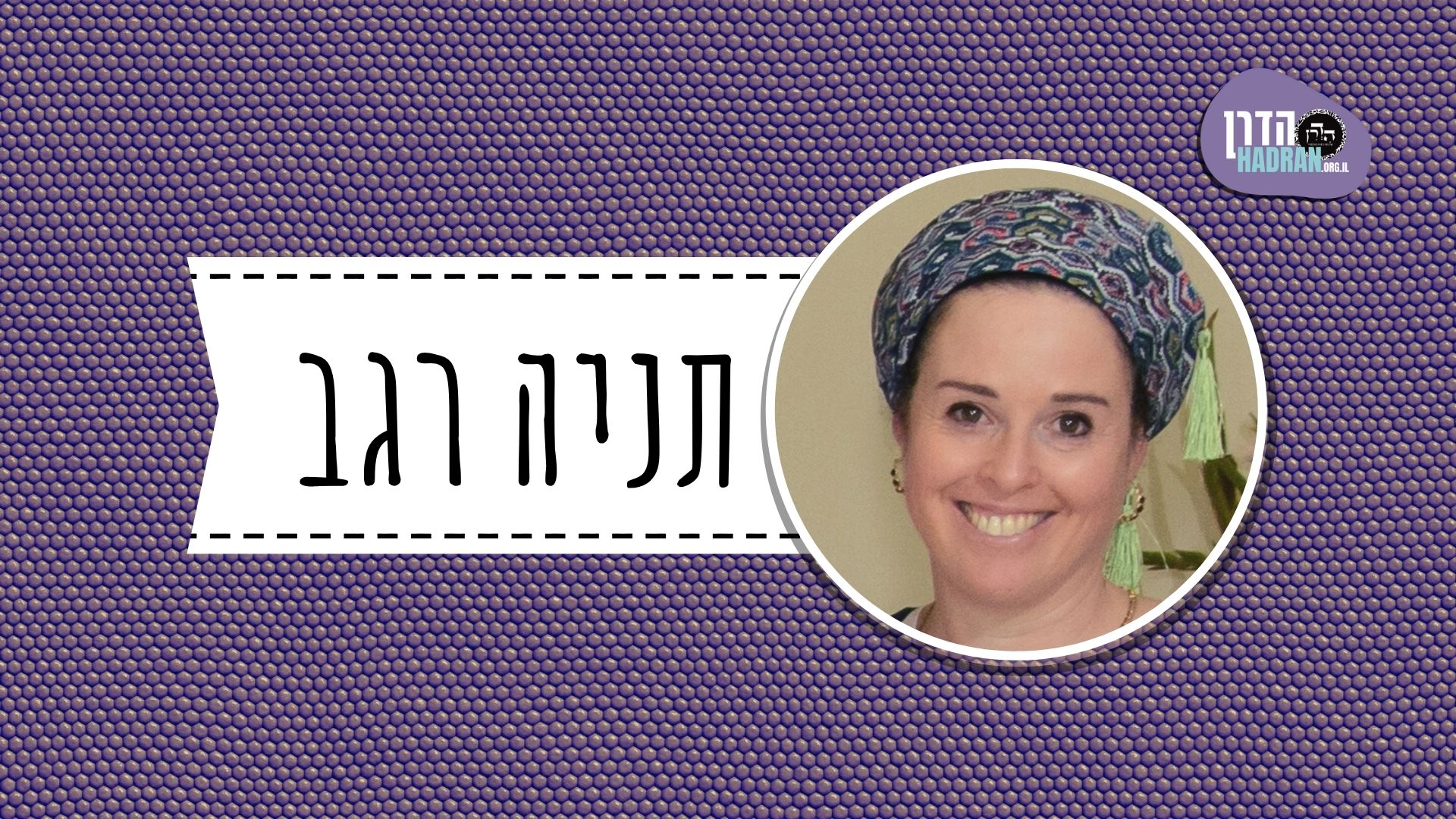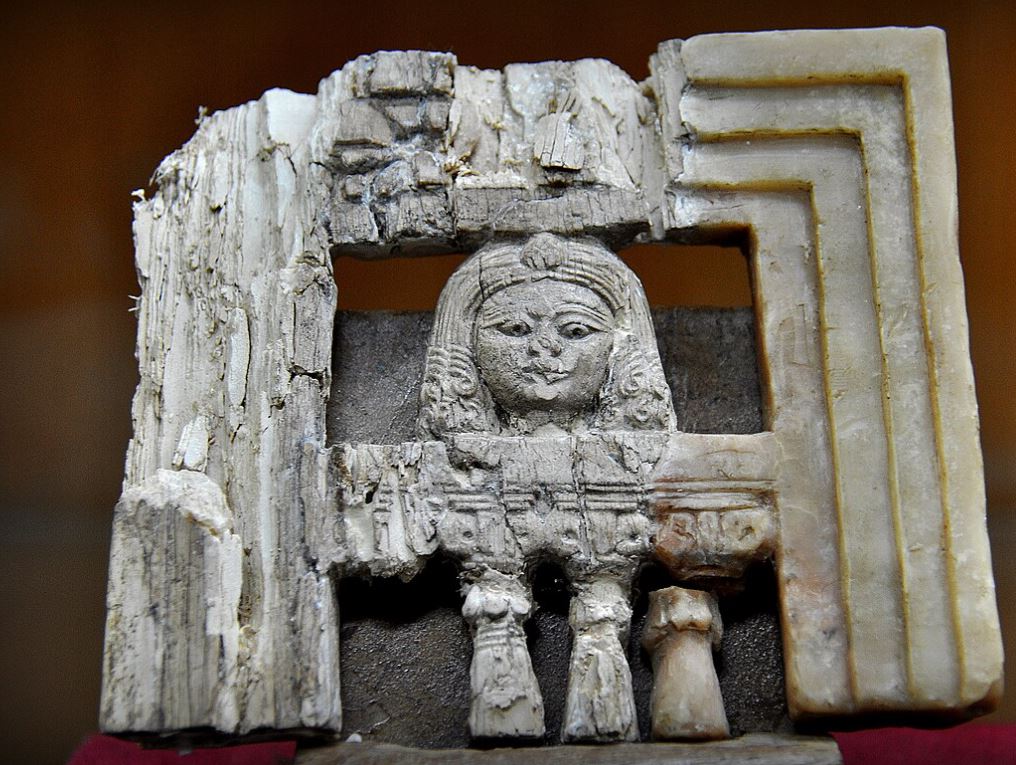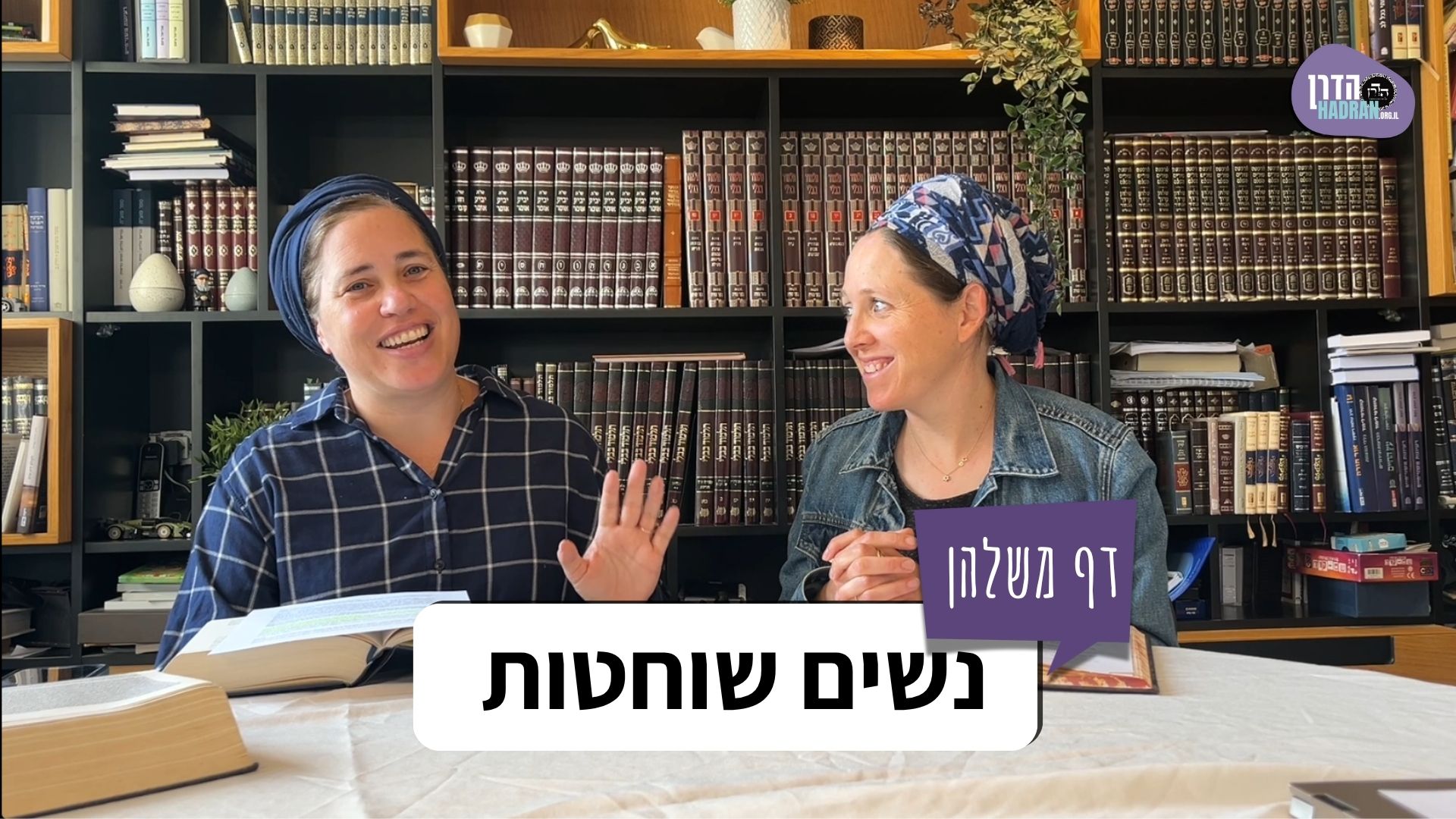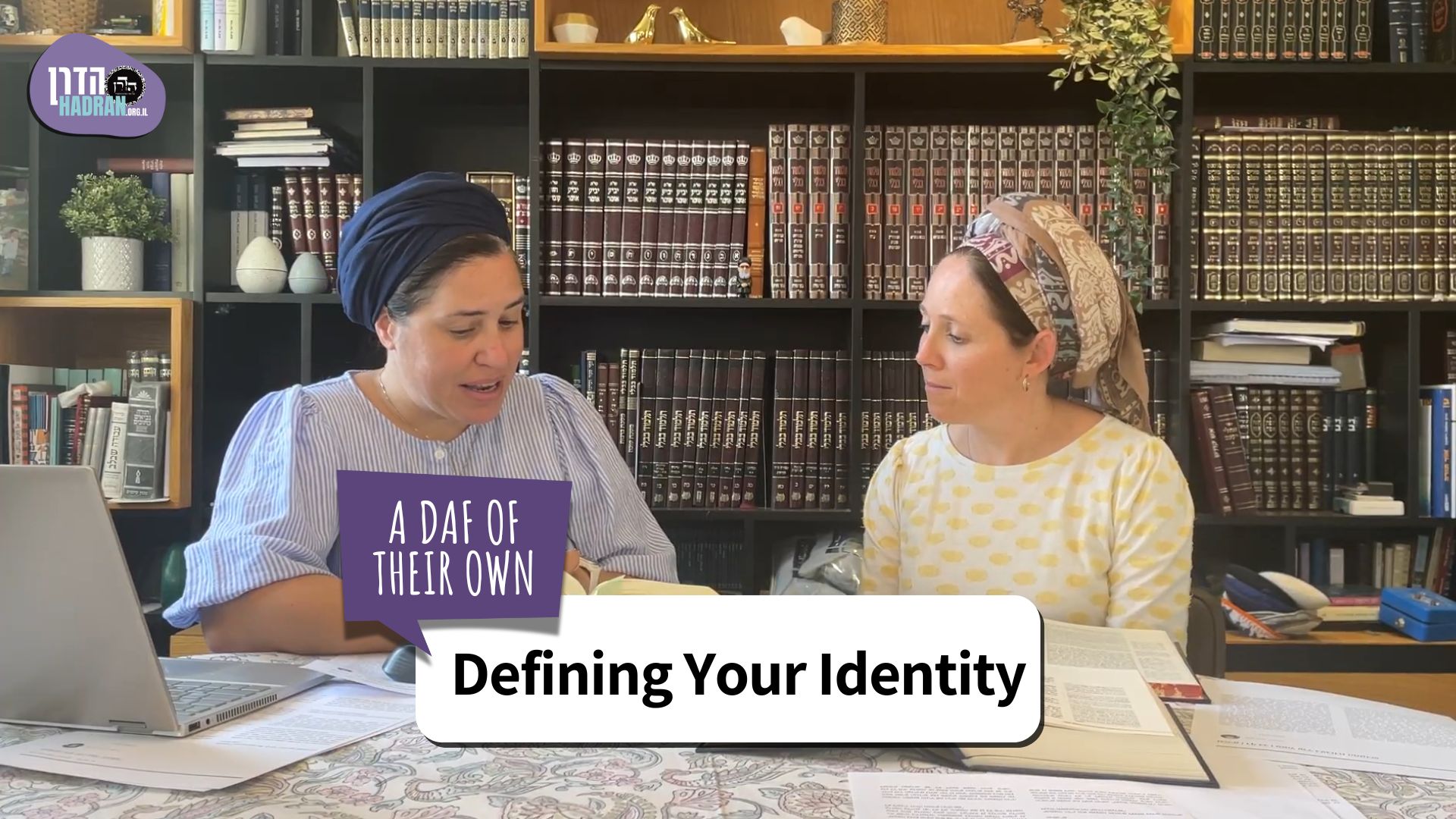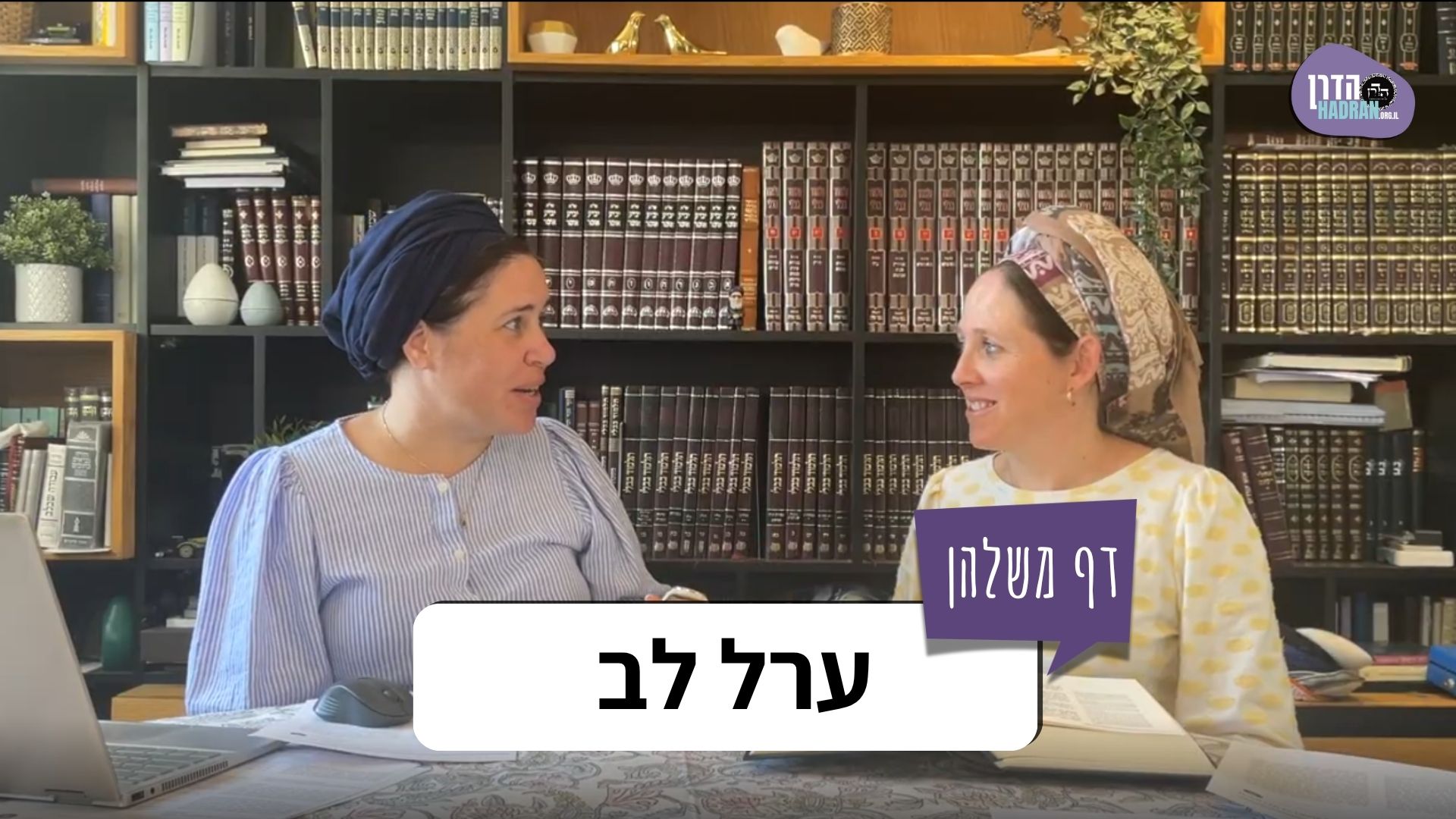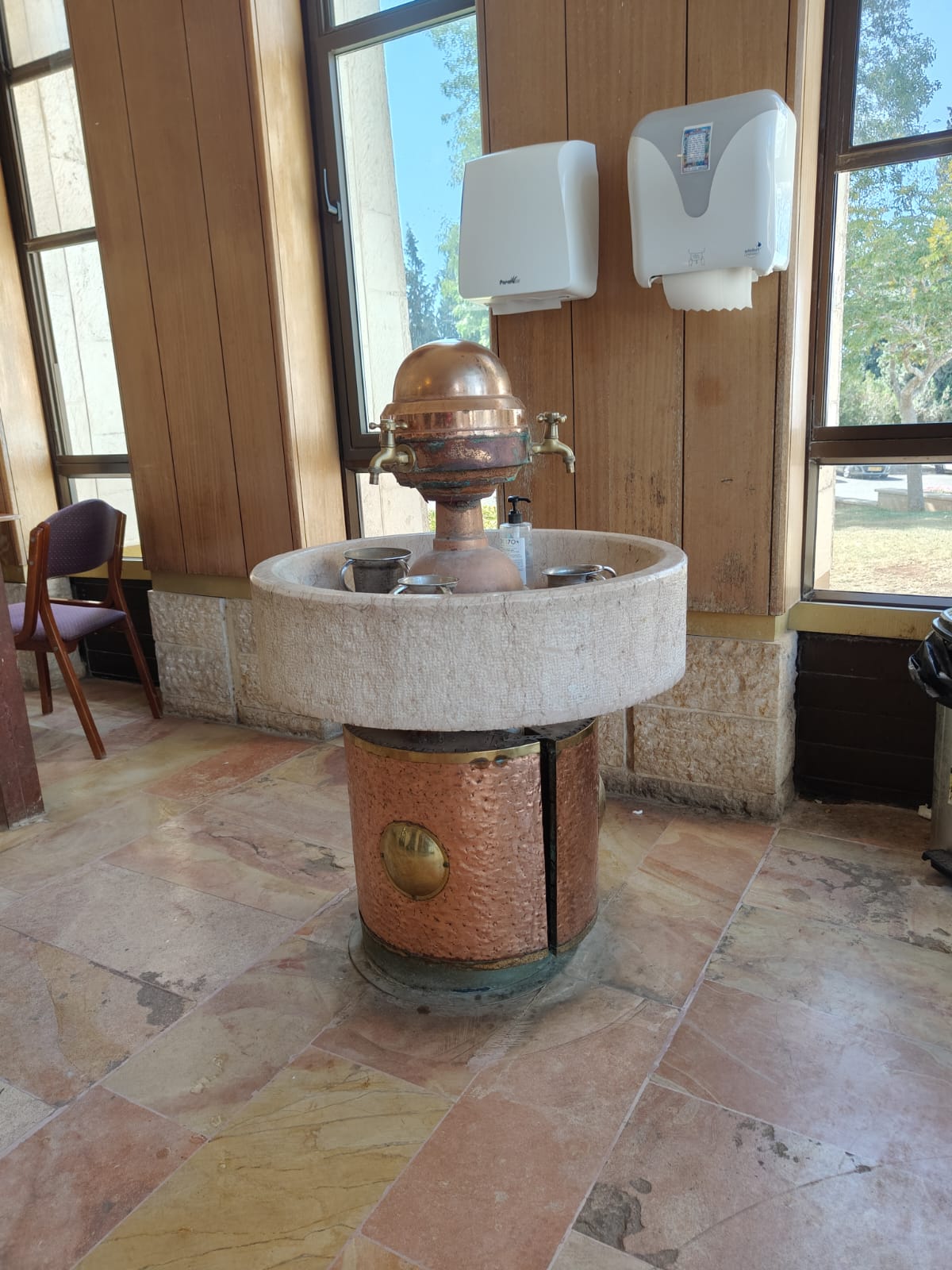Cases regarding different issues in the lungs are discussed – are they considered treifa or not?
This month’s learning is sponsored by Beth Balkany in honor of their granddaughter, Devorah Chana Serach Eichel. “May she grow up to be a lifelong learner.”
Want to dedicate learning? Get started here:


This month’s learning is sponsored by Beth Balkany in honor of their granddaughter, Devorah Chana Serach Eichel. “May she grow up to be a lifelong learner.”
Delve Deeper
Broaden your understanding of the topics on this daf with classes and podcasts from top women Talmud scholars.
New to Talmud?
Check out our resources designed to help you navigate a page of Talmud – and study at the pace, level and style that fits you.
The Hadran Women’s Tapestry
Meet the diverse women learning Gemara at Hadran and hear their stories.
Chullin 47
ואמר רבא הני תרתי בועי דסמיכי להדדי לית להו בדיקותא חדא ומתחזיא כתרתי מייתינן סילוא ובזעינן לה אי שפכן להדדי חדא היא וכשרה ואי לא תרתי נינהו וטרפה
And Rava says: These two cysts that are adjacent to one another on the lung have no need for inspection. The animal is definitely a tereifa, since it is presumed that the cysts formed around a perforation in the lung. But if there is only one cyst that looks like two, due to a depression in the middle, we bring a thorn and pierce it to remove the fluid inside. If the fluids from either side empty into one another, this indicates that it is one cyst, and the animal is kosher. And if not, they are two separate cysts, and the animal is a tereifa.
ואמר רבא ה’ אוני אית לה לריאה אפה כלפי גברא תלתא מימינא ותרתי משמאלא חסיר או יתיר או חליף טרפה
§ And Rava says: The lung has five lobes [unnei]. When the animal hangs by its legs with its face toward the person checking it, he sees three lobes on his right and two on his left. If the animal is missing a lobe or has an extra lobe, or if the lobes were switched, with two on the right and three on the left, the animal is a tereifa.
ההוא יתירתא דאתאי לקמיה דמרימר הוה יתיב רב אחא אבבא א”ל מאי אמר לך א”ל אכשרה ניהלה א”ל הדר עיילה קמיה א”ל זיל אימא ליה למאן דיתיב אבבא לית הלכתא כוותיה דרבא ביתרת
The Gemara relates that a certain lung that had an extra lobe was brought before Mareimar. Rav Aḥa was sitting at the door of Mareimar’s house. When the animal’s owner was leaving, Rav Aḥa said to him: What did Mareimar say to you? The man said to him: Mareimar deemed it kosher. Rav Aḥa was surprised by this, because it contradicts Rava’s statement, so he said to him: Turn around and bring the animal before him. The owner did so. Mareimar realized why he was being asked twice, and said to him: Go tell whomever is sitting at the door: The halakha is not in accordance with the opinion of Rava in the case of an animal that has an extra lobe.
והני מילי דקיימא בדרא דאוני אבל ביני ביני טרפה
The Gemara adds: And this statement applies only when the extra lobe stands in line with the other lobes, on the left or right. But if it is in between the two sides, the animal is a tereifa.
ההוא ביני ביני דאתא לקמיה דרב אשי סבר רב אשי למיטרפה א”ל רב הונא מר בר אויא כל הני חיוי ברייתא הכי אית להו וקרו לה טבחי עינוניתא דוורדא והני מילי מגואי
The Gemara relates that a certain animal with an extra lobe in between the two sides was brought before Rav Ashi. Rav Ashi thought to deem it a tereifa. Rav Huna Mar bar Avya said to him: All those animals that graze outside in the fields have extra lobes like this, and butchers call it the little rose lobe. The Gemara adds: And this statement applies only when the extra lobe is on the inside face of the lung, facing the heart.
אבל אגבה אפילו כטרפא דאסא טרפה
But if it is on the back of the lung, even if it is as small as a myrtle leaf, the animal is a tereifa.
אמר רפרם האי ריאה דדמיא לאופתא טרפה איכא דאמרי בחזותא ואיכא דאמרי בגישתא איכא דאמרי דנפיחה ואיכא דאמרי דפחיזא ואיכא דאמרי דשיעא דלית לה חיתוכא דאוני
§ Rafram says: This lung that is similar to a chip of wood renders the animal a tereifa. There are those who say that the similarity lies in its appearance, i.e., if it is pale like wood. And there are those who say that it lies in its feeling, i.e., if it is hard like wood. There are those who say that it is swollen. And there are those who say that it is light. And there are those who say that it is completely smooth, that it has no sectioning of lobes.
אמר רבא ככוחלא כשרה כדיותא טרפה דא”ר חנינא שחור אדום הוא אלא שלקה
§ Rava says: If the lung assumed a dark color like eye shadow, the animal is kosher. If its color is black like ink, the animal is a tereifa. As Rabbi Ḥanina says: Menstrual blood that appears black is actually red, except that it decayed. Black color is therefore a sign of decay, and the lung is assumed to be defective.
ירוקה כשרה מדרבי נתן אדומה כשרה מדרבי נתן דתניא רבי נתן אומר פעם אחת הלכתי לכרכי הים באתה אשה אחת לפני שמלה בנה ראשון ומת שני ומת שלישי הביאתו לפני ראיתיו שהיה אדום אמרתי לה בתי המתיני לו עד שיבלע בו דמו המתינה לו ומלה אותו וחיה והיו קורין אותו נתן הבבלי על שמי
The Gemara continues: If the lung was green, the animal is kosher, as can be derived from the episode of Rabbi Natan. And if it was red, it is kosher, as can be derived from the episode of Rabbi Natan. As it is taught in a baraita: Rabbi Natan says: Once I went to the cities overseas, where one woman came before me who circumcised her first son and he died, and she circumcised her second son and he died, and out of concern that circumcising her third son might cause him to die as well, she brought him before me. I saw that he was red, so I said to her: My daughter, wait for him until his blood is absorbed into him. She waited for him until his blood was absorbed into him and then circumcised him, and he survived. And they would call him Natan the Babylonian after my name. This incident indicates that a red lung can heal.
ושוב פעם אחת הלכתי למדינת קפוטקיא באתה אשה לפני שמלה בנה ראשון ומת שני ומת שלישי הביאתו לפני ראיתיו שהיה ירוק הצצתי בו ולא היה בו דם ברית אמרתי לה בתי המתיני לו עד שיפול בו דמו המתינה לו ומלה אותו וחיה והיו קורין אותו נתן הבבלי על שמי
Rabbi Natan further related: And on another occasion I went to the state of Cappadocia, and a woman came before me who circumcised her first son and he died, and she circumcised her second son and he died. Out of concern that circumcising her third son might cause him to die as well, she brought him before me. I saw that he was green, i.e., pale. I looked at him and saw that he did not have the blood of circumcision in him, i.e., he had a deficiency of blood such that no blood would emerge from the circumcision. I said to her: My daughter, wait until his blood enters him. She waited for his blood to increase and then circumcised him, and he survived. And they would call his name Natan the Babylonian after my name. This incident indicates that a green lung can heal as well.
אמר רב כהנא ככבדא כשרה כבשרא טרפה וסימניך (שמות כב, ל) ובשר בשדה טרפה
Rav Kahana says: If the lung has an appearance like the liver, the animal is kosher. If it has an appearance like flesh, the animal is a tereifa. And your mnemonic to remember that the latter is a tereifa is the verse: “You shall not eat any flesh that is torn of animals [tereifa] in the field” (Exodus 22:30).
אמר רב סמא בריה דרבא האי ריאה דדמיא ככשותא וכמוריקא וכגון ביעתא טרפה אלא ירוקה דכשרה היכי דמיא ככרתי
Rav Sama, son of Rava, says: This lung whose appearance resembles dodder, or saffron, or has a yellow color such as that of an egg yolk, renders the animal a tereifa. Since all of these appearances are various shades of green, the Gemara asks: But the green lung that is kosher, what is it like? The Gemara responds: It is like a leek.
אמר רבינא אטום בריאה מייתינן סכינא וקרעינן לה אי אית בה מוגלא ודאי מחמת מוגלא הוא וכשרה ואי לא מותבינן עלה גדפא או רוקא אי מבצבצא כשרה ואי לא טרפה
§ Ravina says: If there was a sealed area in the lung that does not inflate, we bring a knife and tear it open. If there is pus in the sealed area, then it was definitely sealed due to the pus, and the animal is kosher. But if we do not find pus there, we lay a feather or saliva on the opening and inflate the lung. If the saliva bubbles or the feather moves, the animal is kosher, since some air does reach the area, and if not, there is some defect in the lung, and the animal is a tereifa.
אמר רב יוסף קרום שעלה מחמת מכה בריאה אינו קרום ואמר רב יוסף האי ריאה דאוושא אי ידעינן היכא אוושא מנחינן עלה גדפא או גילא או רוקא אי מבצבצא טרפה ואי לא כשרה ואי לא ידעינן לה מייתי משיכותא דמיא פשורי ומותבינן לה בגוה
Rav Yosef says: A membrane that appeared due to a wound in the lung, i.e., a scab that covered a perforation through the lung, is not considered a true membrane, since it does not last. And Rav Yosef says: With regard to this lung that emits a sound when inflated, if we know from where it emits a sound, we set a feather, or straw, or saliva on that point. If the saliva bubbles when the lung is inflated, the animal is a tereifa, since this proves that the lung is perforated through both membranes. And if not, the animal is kosher. And if we do not know from where it emits a sound, we bring a basin of tepid water and set the lung inside it.
בחמימי לא דכווצי בקרירי לא דמטרשי אלא בדקינן לה בפשורי אי מבצבצא טרפה ואי לא כשרה תתאה אינקיב עילאה לא אינקיב והאי דאוושא זיקא דביני וביני הוא
One cannot place it in hot water, as it causes the lung to contract, closing the perforation. And one cannot place it in cold water, as it hardens the lung and may cause it to crack. Rather, we check it in tepid water. If the water bubbles, the animal is a tereifa. And if not, the animal is kosher, since it is apparent that only the inner membrane is perforated and the outer membrane is not perforated, and the fact that it emits a sound is due to the air moving in the space between the two membranes.
אמר עולא א”ר יוחנן ריאה שנשפכה כקיתון כשרה אלמא קסבר חסרון מבפנים לא שמיה חסרון
§ Ulla says that Rabbi Yoḥanan says: An animal with a lung that liquefied and can be poured out like water from a jug is kosher. The Gemara notes: Evidently, Rabbi Yoḥanan holds that a deficiency on the inside of an organ is not considered a deficiency. Only a deficiency in the wall or membrane of an organ renders an animal a tereifa.
איתיביה רבי אבא לעולא הריאה שניקבה או שחסרה מאי חסרה אילימא מבחוץ היינו ניקבה אלא לאו מבפנים ושמע מינה חסרון מבפנים שמיה חסרון
Rabbi Abba raised an objection to Ulla from the mishna, which states: The lung that was perforated or that was missing a piece renders the animal a tereifa. What is the case of a lung that was missing a piece? If we say that it was missing a piece on the outside, this is the same as if it was perforated, since any missing piece of the lung wall would constitute a perforation. Rather, is it not referring to a missing piece on the inside? If so, learn from the mishna that a deficiency on the inside of an organ is considered a deficiency to render the animal a tereifa.
לא לעולם מבחוץ ודקא אמרת היינו ניקבה לא צריכא לרבי שמעון דאמר עד שתנקב לבית הסמפונות ה”מ נקב דלית ביה חסרון אבל נקב דאית ביה חסרון אפילו רבי שמעון מודה
The Gemara responds: No, the mishna actually is referring to a missing piece on the outside. And with regard to that which you said: This is the same as if it was perforated, one may respond that no, it is necessary to mention both cases to account for the opinion of Rabbi Shimon in the mishna, who says: It is not a tereifa until the lung is perforated through to the bronchi. By mentioning both cases, the mishna teaches that this statement of Rabbi Shimon applies only to a small perforation that does not constitute a deficiency. But in the case of a perforation so large that it constitutes a deficiency, even Rabbi Shimon concedes that it renders the animal a tereifa even if the perforation does not reach the bronchi.
רבי חנניה חלש על לגביה רבי נתן וכל גדולי הדור אייתו קמיה ריאה שנשפכה כקיתון ואכשרה
The Gemara relates that Rabbi Ḥananya became sick. Rabbi Natan and all the eminent scholars of the generation entered before him to visit. They brought before him a lung that could be poured out like water from a jug, and he deemed the animal kosher.
אמר רבא והוא דקיימי סמפונות אמר ליה רב אחא בריה דרבא לרב אשי מנא ידעינן אמר ליה מייתינן צעא דקוניא ושפכינן לה בגויה אי אית בה שורייקי חיורי טרפה ואי לא כשרה
Rava said: This is the halakha only if the bronchi still exist and only the flesh of the lung has liquefied. Rav Aḥa, son of Rava, said to Rav Ashi: From where do we know whether the bronchi still exist? Rav Ashi said to him: We bring a glazed earthenware vessel with no cracks, so the contents can be observed, and we pour the lung into it. If there are white streaks in it, the animal is a tereifa, as the white streaks are remains of the liquefied bronchi. And if not, the animal is kosher.
אמר רב נחמן ריאה שנימוקה וקרום שלה קיים כשרה תניא נמי הכי ריאה שנימוקה וקרום שלה קיים אפילו מחזקת רביעית כשרה ניטלה
Rav Naḥman says: If the lung was partially atrophied and only part of the flesh remains, but its membrane still exists, the animal is kosher. The Gemara notes: This is also taught in a baraita: If the lung was atrophied, but its membrane still exists, even if the space vacated by the atrophied lung can hold a quarter-log of fluid, the animal is kosher.





